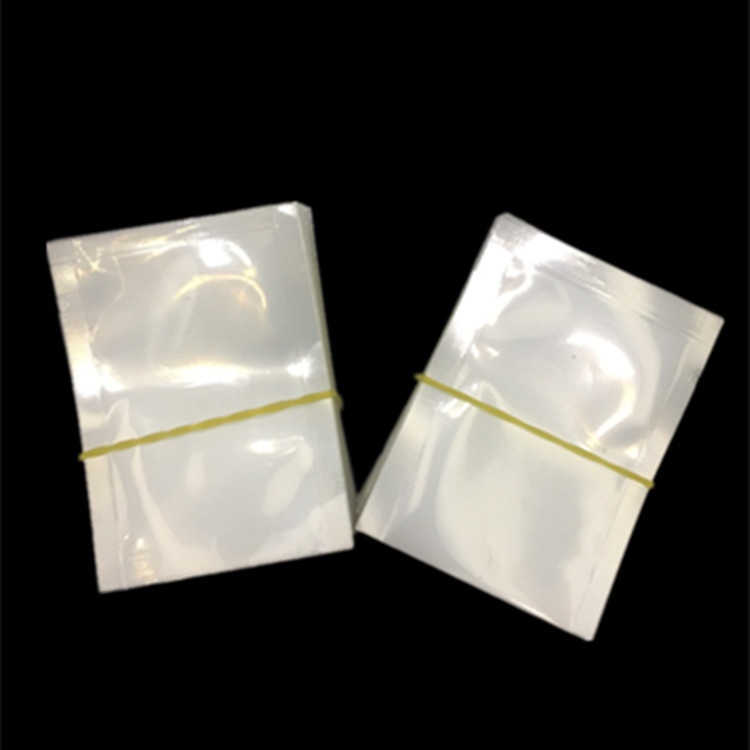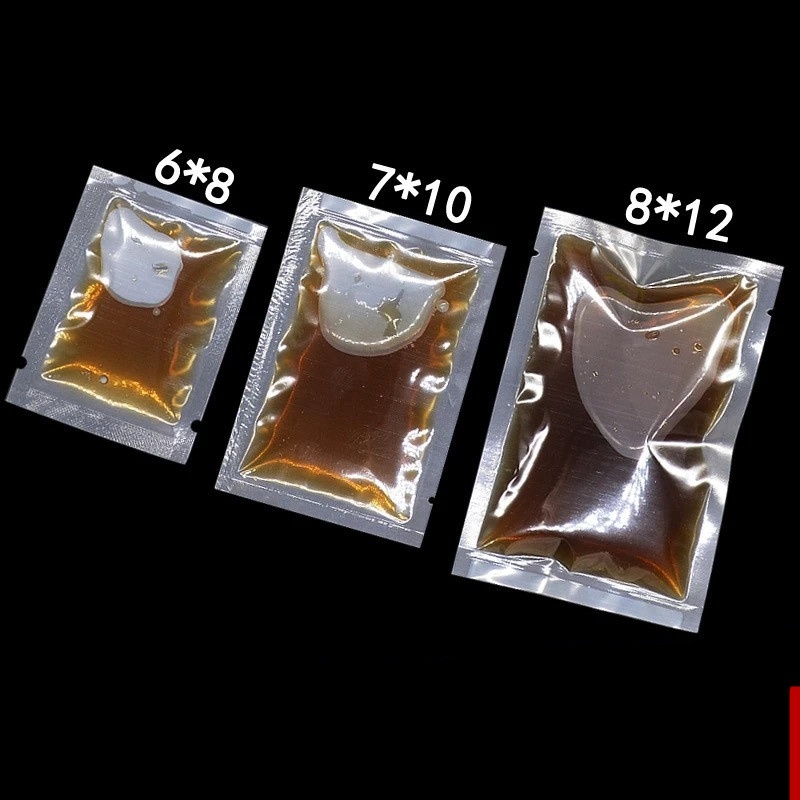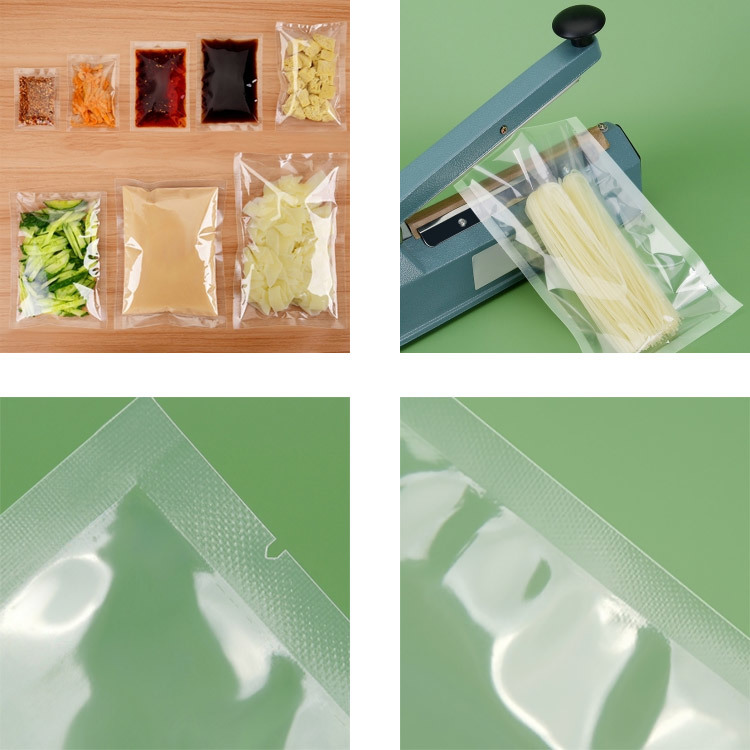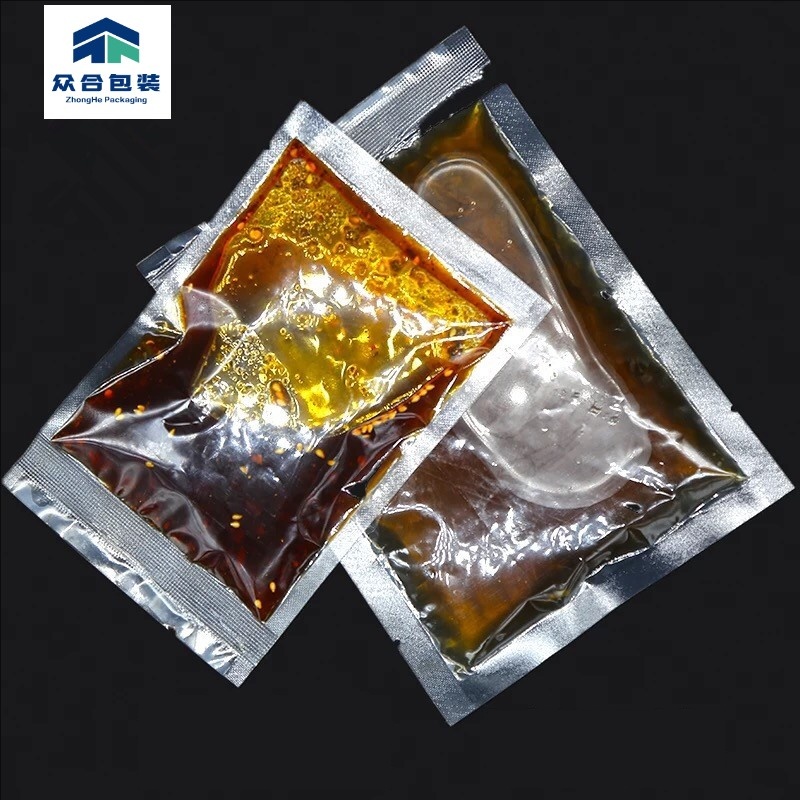Category:
- Product Description
Seasoning packet packaging bag
-
- Commodity name: Seasoning packet packaging bag
Brief Description: Condiment product packaging refers to packaging materials used to contain and protect various condiments. It is specifically designed and manufactured to meet the packaging needs of condiments. Its main function is to ensure the quality and safety of condiments, facilitate storage, transportation, and use, while also displaying product information.
Brief Description:
Condiment packaging is used to contain and protect various condiments. It is specifically designed and manufactured for the packaging needs of this type of goods. Its main function is to ensure the quality and safety of the condiments, facilitate storage, transportation and use, and display product information.
Detailed Description:
Condiment packaging is a series of containers or bags specifically manufactured to contain, protect, and display various condiments. It is carefully designed and produced based on the physicochemical properties of the condiments, market demand, and consumer usage habits. It can provide effective protection and convenient packaging for the entire process of condiment products from storage, transportation to sales and use. It creates a "protective outer layer" for condiments, aiming to ensure the quality and hygiene of condiments and provide consumers with a convenient user experience.
A wide variety of materials are used in condiment packaging to meet the characteristics and preservation requirements of different condiments. The most basic rigid requirements for materials are leak-proofness, prevention of odor diffusion, and resistance to chemical corrosion. Common materials usually include plastics, paper, and composite materials. Plastic materials such as polyethylene (PE), the thickness and toughness of this material can withstand the weight and pressure of condiments, have good sealing and moisture-proof properties, and due to their excellent moisture-proof and leak-proof performance, they are often used in packaging liquid condiments such as soy sauce and vinegar; paper materials need to have a certain degree of waterproof and oil-proof treatment, paper materials are more environmentally friendly, and can print rich product information, the printing effect is excellent, and more often appear in the packaging of dry condiments such as salt and sugar; composite materials combine the advantages of various materials such as plastics, aluminum foil, and paper, providing ideal protection for some volatile or easily oxidized condiments or spices, and can also better maintain the flavor of the condiments.
Common bag types for condiment packaging include three-side sealed bags, stand-up pouches, zipper bags, and spout pouches. Three-side sealed bags have a simple structure and reliable sealing, are simple and practical, and are suitable for small-sized condiment packaging; stand-up pouches can stand stably, are easy to place and display, have excellent display effects on shelves, and are often used for medium and large packaging; zipper bags can be opened and closed multiple times, making it convenient for consumers to use and seal multiple times, suitable for condiments with a longer storage period; spout pouches facilitate precise control of the amount of material dispensed, and are often used in the use of liquid condiments.
The design of condiment packaging considers the usage scenarios and habits of consumers. The packaging clearly indicates key information such as the name, ingredients, shelf life, and usage method of the condiment, and uses eye-catching colors and unique patterns to attract consumers' attention. For example, the packaging of a high-quality mixed spice may use composite materials to maintain the rich aroma of the spice, the bag type is a stand-up zipper bag, and the printing displays the scenery of the spice's origin and the unique formula, giving consumers a double expectation of vision and taste.
The processing flow of condiment packaging generally includes material selection, printing, lamination, bag making, quality inspection, and packaging. First, suitable materials are selected according to the characteristics of the condiment and customer requirements, then printing is carried out, then lamination is carried out to enhance performance, bags are made, quality inspection is carried out, and finally packaging and shipment are carried out.
Condiment packaging can bring many benefits to customers, such as effectively maintaining the quality and flavor of condiments, extending shelf life; improving the appearance of products and enhancing market competitiveness; and facilitating consumer use and storage. Condiment packaging has a particularly wide range of applications, suitable for various condiments such as salt, sugar, soy sauce, vinegar, spices, and sauces, and is commonly found in supermarkets, kitchens, restaurants, and food processing plants.
What types of bags are there for condiment packaging?
Common condiment packaging bag types include:
Three-side sealed bag: Three sides are sealed, the structure is compact, and space is saved.
Stand-up pouch: The bottom is wide, it can stand upright, and the display effect is good.
Zipper bag: Equipped with a zipper seal, convenient for multiple opening and closing.
Spout pouch: With a spout, it is convenient for quantitatively taking liquid condiments.
Characteristics of condiment packaging
Good sealing, preventing leakage and moisture absorption of condiments.
Chemical corrosion resistance, can resist the corrosion of condiments.
Clear printing, accurate labeling, easy to identify.
Safe materials, meet the standards of food contact materials.
Material parameters of condiment packaging
The thickness of plastic materials is generally between 0.05mm and 0.2mm, and the tensile strength is greater than 10MPa.
The grammage of paper materials is usually between 80g/m² and 300g/m², and the burst strength and tear strength must meet the packaging requirements.
The parameters such as the bonding strength of each layer, oxygen permeability, and water vapor permeability of composite materials are determined according to specific requirements.
Condiment packaging processing flow
Material preparation: According to the nature of the condiment and customer needs, purchase suitable plastic films, paper, composite adhesives and other raw materials.
Printing plate making: Make printing plates according to the design pattern to ensure printing quality and accuracy.
Printing: Use gravure printing, flexographic printing, or digital printing technology to print clear and vivid patterns and text on the packaging materials.
Lamination (if necessary): For composite packaging materials, different materials are laminated together through adhesives or hot pressing to form a multi-layer structure.
Bag making: Use bag-making equipment to make the printed and laminated materials into the required bag types, such as three-side sealed bags and stand-up pouches, and perform heat sealing or other sealing treatments.
Quality inspection: Conduct strict quality inspection of the produced condiment packaging, including appearance inspection, size measurement, seal strength test, material performance test, etc.
Packaging: Organize, count, and package qualified products, ready for delivery to customers.
Our Advantages
As a manufacturer, we have the following outstanding advantages:
Advanced production equipment and technology: We have industry-leading printing, laminating, and bag-making equipment, mature process technology, and can achieve high-precision and high-efficiency production. A rich product line to meet the packaging needs of different condiments;
Strict Quality Control System: From raw material procurement to finished product delivery, a complete quality inspection process has been established to ensure product safety and hygiene, stable quality, and every package meets high-quality standards.
Professional R&D Team: Able to continuously develop new packaging designs and materials based on market changes and customer needs, providing customers with innovative solutions.
Personalized Customization Service: Based on the customer's brand image, product characteristics, and market positioning, we provide tailor-made seasoning product packaging solutions to meet the customer's unique needs.
Efficient Production Management and Supply Chain: By optimizing production processes and supply chain management, we can ensure timely order delivery and provide customers with timely and reliable services.
The Value of Seasoning Product Packaging
For customers, our seasoning product packaging can bring the following important values:
Quality Assurance: Effectively protects the quality and flavor of the seasoning, extends the shelf life of the seasoning, and reduces product spoilage and waste due to packaging problems.
Brand Building: Exquisite packaging design helps to enhance brand image, enhance brand recognition and reputation in the market, and attract more consumers.
Improved Market Competitiveness: Unique and attractive packaging can stand out from numerous competitors, increasing product market share and sales performance.
Increased Consumer Satisfaction: Convenient and easy-to-use packaging can enhance the consumer experience, increase consumer satisfaction and loyalty, and promote repeat purchases.
Application Scope of Seasoning Product Packaging
Seasoning product packaging is widely used in the following areas:
Liquid Seasonings: Such as soy sauce, vinegar, edible oil, etc.
Dry Seasonings: Such as salt, sugar, pepper powder, peppercorn powder, etc.
Sauces: Such as fermented soybean paste, chili sauce, tomato sauce, etc.
Spices: Such as star anise, cassia bark, bay leaves, etc.
Supermarkets and Retail Stores: Providing consumers with neatly and beautifully packaged seasoning products.
Food Processing Plants: Used for mass packaging of seasoning products.
Catering Businesses: Providing a large number of seasoning packages for restaurants, canteens, etc.
Online Consultation
Contact us immediately for free expert consultation services!
Related Products



 Haijun Zhang
Haijun Zhang
 WhatsApp (Mia)
WhatsApp (Mia)